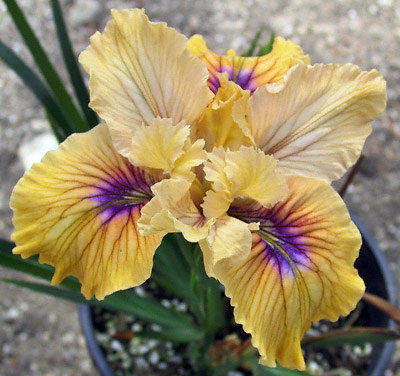
I don’t know about your plans for the summer, but I’ll be sticking close to home. What with the price of gas and groceries, I’m planning a couple of camping trips in our great state. I guess you could say I’m going to be enjoying a “staycation.”
With my attention directed more to the homefront, I want to focus especially on making sure I have color in my garden every month of the year. I love my hummingbird visitors so I want to fine-tune my containers and plantings so they attract as many of these small wonders as I can.
While making an entry in my journal recently, noting the progress of my pet trees, shrubs and perennials, I was struck by the realization that I don’t have enough color in my garden in the month of May.
You’d think “April showers bring May flowers” would have done the trick, but our cool weather has slowed things down a bit. I love my white calla lilies, double-file viburnum and bleeding hearts, but all that white is a little too quiet for my tastes. I was sorry to see my vivid late red tulips finally drop their petals in the rain. Their absence leaves a void I plan to fill right away. I want a few hot samba colors to punch up my landscape.
I like many color combinations. I could go with pale orange with white — they look great together. If I chose a variegated salmon Abutilon (flowering maple) as a focal point, I might pair it with orange calibrachoa, a rust-colored coleus, bonfire begonia, Gartenmeister fuchsia and a Catlin’s Giant ajuga to tie it together. They’ll bloom all summer, and the fuchsia attracts hummingbirds, too. If you garden in the sun, you could use an orange geranium, Terra Cotta yarrow, orange coneflower, agastache or a wallflower with Evening Glow coprosma, instead of the begonia and fuchsia.
Burgundy and gold are energetic opposites that never fail to catch the eye. When two colors are complementary, it means they bring out the best in each other. Their hues lend a sense of majesty to any garden.
Plants that can be considered gold lie in a narrow band of color, ranging from pure yellow to chartreuse. These hues brighten shady spots and create a great background for the burgundy. Did you know that the color yellow sits right in the middle of the light spectrum visible to the human eye? It reflects more light than any of the other colors. That must be why I have so much of it in my shady garden. It really livens up the place.
Here are a couple of successful vignettes demonstrating eye-catching possibilities for any garden.
**The smokebush is looking especially vibrant this year in the cool weather. It would pair well with a spirea Goldmound or Limemound. Add a phormium Jester, Roseglow Japanese barberry and a Sapphire blue oat grass to cool things down, and you’ve got a winning combination.
**Or how about a Bloodgood Japanese maple surrounded by All Gold Japanese forest grass, Festival grass cordyline or a Yellow Wave New Zealand flax? Bearded iris come in every color of the rainbow, and a purple-and-gold one would fit it perfectly. You could also add a Diamond Heights ceanothus and a pale-yellow or red mimulus for the hummingbirds.
Whatever colors you choose, kick it up a notch, and make sure you have blooms and hummingbirds all year in your garden.
Jan Nelson, a landscape designer and California certified nursery professional at Plant Works in Ben Lomond, will answer questions about gardening in the Santa Cruz Mountains. E-mail her at ja******@*ol.com, or visit www.jannelsonlandscapedesign.com to view previous columns and pictures.











